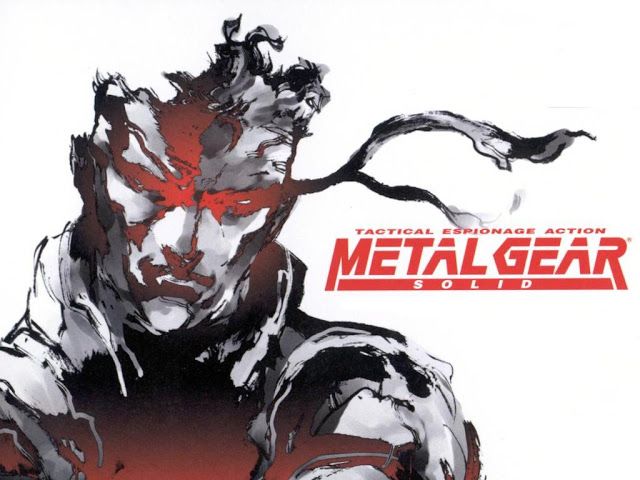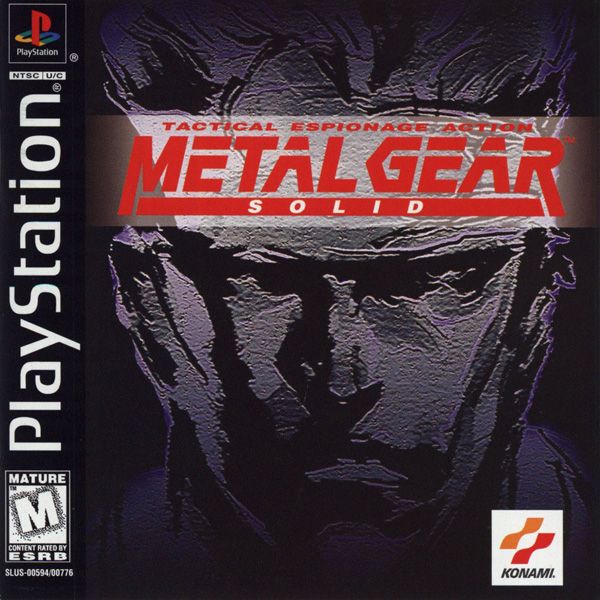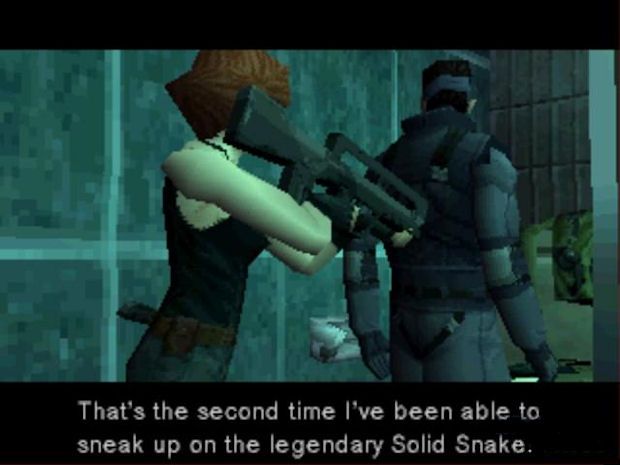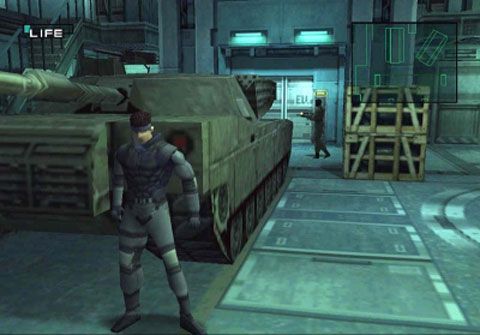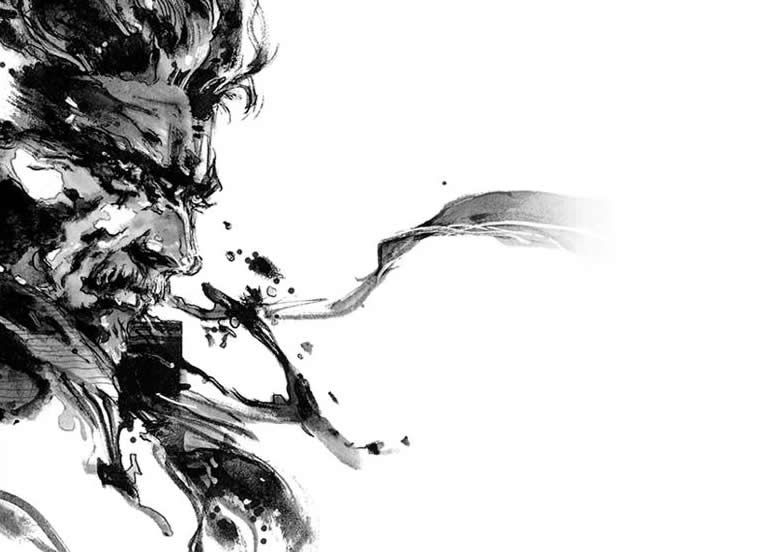Snake?
SNAKE?
SNAAAAAAAAAKE!!!
The first time I heard that after my initial game-over, I could only crack a smile with giddy excitement.
I knew that that increasingly blood-curdling, dramatic, but iconic call from Colonel Campbell can only come from one series, and most of all, a game that challenged the very notions of storytelling in video games: Metal Gear Solid.
Since its debut in 1998 on the original PlayStation, Metal Gear Solid and its subsequent sequels over the next 15 years (and ongoing into the present, with Ground Zeroes and The Phantom Pain both currently in development for the next-gen consoles by series creator Hideo Kojima) became exactly what its famous tagline promised: Tactical Espionage Action. Pushing the limits of Sony’s debut hardware at the time, Metal Gear Solid was many things: an intense and (truly) mature experience with an intriguing story, iconic boss battles, (at the time) amazing graphics, and, yes, an incredibly engaging cardboard box-wearing simulator.
(Relax Metal Gear fans – I kid, I kid)
All the more reason why, for the longest time, I was incredibly embarrassed at the fact that I had never truly had the chance to play or finish the original Metal Gear Solid, let alone the rest of the series. Sure, I played the demo several times on a PlayStation Underground disc that I borrowed from my cousin (boy…I just feel old even mentioning PlayStation Underground). Sure, I played through a decent portion of Silicon Knights’ 2004 remake of the game for GameCube, Metal Gear Solid: The Twin Snakes, only to be stuck at the Sniper Wolf battle and ever remaining frustrated at the game.
(Don’t worry: the Present Ryan looks on at Past Ryan only with shame for not finishing MGS: The Twin Snakes back when I had the opportunity – poor Meryl.)
But, for the longest time I knew that I was (regrettably) missing out on one of the premier PlayStation franchises to sneak along on Sony’s consoles: especially much to the chagrin of many of my friends that happen to be die-hard fans of the franchise (as if their codec call ring-tones didn’t give it away or anything). With the series celebrating its 25th Anniversary last year and the release of the Metal Gear Solid: Legacy Collection this past July on PS3, I figured enough was enough: as quickly as Snake could sneak away into the shadows or Grey Fox could bare his sword, I snatched up a copy of the PS2 Metal Gear Collection from a friend and dusted off my PS2 to dive into the series (and save the world from nuclear war, of course).
Boy, have I missed a lot in 15 years.
Suffice it to say, seeing that vintage “PS” logo pop up on my screen in endearingly pixilated goodness on my TV was a sight for sore eyes. Luckily though, once I popped in my PlayStation memory card (with a whopping 1MB of memory), I was right back into the espionage world of Snake, and thus my journey into the MGS world began.
Metal Gear Solid was always one of those games that I felt like I DID actually play without ever stepping into the shoes of Solid Snake for a minute: you can’t put together a “Greatest Boss List” without the likes of Psycho Mantis or Grey Fox. You can’t play a stealth game nowadays without seeing at least a little of the influence down the generations that Metal Gear Solid imbued on both its imitators and its inspirations. It’s a genuine classic that even though I was really only playing through the game for the first time, I was already anticipating many of its most iconic moments before they even happened, given their cemented status in the mind and common culture of video games. Before I even got there, I was ready for Ocelot’s torture. Before I even knew it, I was ready to unplug my controller to avoid Psycho Mantis’s extrasensory assaults. Like watching a classic film with an iconic scene or a cherished piece of dialogue, it speaks volumes to the staying power of Metal Gear Solid that even when 15 years since the game’s release have gone by, it still manages to provide a challenging narrative filled with incredibly dynamic moments and encounters that reverberate even in today’s more advanced stealth games.
That said, playing through Metal Gear Solid in its original glory was a blast. Although obviously the visuals and mechanics may not hold up after a decade and a half, Hideo Kojima’s narrative strengths and gameplay innovations still hold up remarkably well - and the legacy of the franchise and its numerous sequels are a testament to that. Snake’s mission to uncover the truth behind FOXHOUND kept me gripped as it probably would have back when I was eight at the game’s original release. Snake’s growing relationship with Meryl, and allowing me the choice to save her or send her to her death kept me going through the onslaught of Ocelot’s torture. Snake’s flirty codec calls with Mei Ling and awkward but hilarious conversations with Otacon kept me laughing through all the jokes and nods to Otacon’s anime obsession. As worried as I was that time would not be kind to the game, Metal Gear Solid proved me wrong by holding up remarkably well and avoiding the curse of looking at older games through rose-tinted glasses (or I guess night goggles or thermal vision, if you want to keep it Metal Gear-like).
Sure, 15 years may not have treated the game well in some regards: I’d be embarrassed to say how much time I had to spend trying to figure out what wasn’t a blurry, grey pixilated wall in a vent from the opening that I had to pass through to advance. Or, maybe even worse, how many times I blew my cover after fumbling with the controls and accidentally tossed a grenade when I didn’t want to and alerted (seemingly) the entire army of soldier goons. After being spoiled by the controls of more current stealth offerings that I’ve enjoyed in the past few years like Splinter Cell: Conviction or The Last of Us, the tank-like controls of Metal Gear Solid by today’s standards often felt cumbersome, or at the very-least more than a little imprecise (especially what I wouldn’t give to have back that first-person mode from MGS: The Twin Snakes – shooting enemies with the pistol or FAMAS later in the game felt like a spray n’ pray fest!).
And yes, I had more than my share of groans after the onslaught of overly-long exposition and cut-scenes (which I’m sure to get a rude-awakening in once I finally make it to Metal Gear Solid 4). But regardless, and probably better than most games in its time, Metal Gear Solid more than made up for it with great challenges, always-changing boss battles, and its signature stealth action (and guiding Nikita missiles – that’s just always a pleasure).
As someone with an ever-growing backlog of games to play and a continually expanding “Pile of Shame” of those series that I’ve always wished that I could get around to, Metal Gear Solid always sat near the top of that list for many years. Unfortunately in the world of gaming, it can be difficult to look back: newer, shinier, prettier things always come along to distract, and older games easily fall by the wayside for me as I try to stay in the know by playing what’s “new” and “current,” and keeping within the conversation.
Going back in and (finally!) playing through the original Metal Gear Solid, however, was a refreshing experience in the middle of trying to play catch-up with all the new games on their way. With a release calendar chock-full of new games coming and the onslaught of the fall almost upon us, playing Metal Gear Solid, nearly 15 years after its release no less, may not be what I previously considered to be keeping within the conversation, but made me realize it’s important, every once and a while, to look back and see where those conversations even started in the first place.
! *Codec ringing* !
Looks like I have a new mission: I think it’s time to go take on Metal Gear Solid 2: Sons of Liberty.
Let’s go, Snake.

